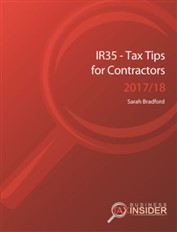
 IR35 -- Why It Matters
IR35 -- Why It Matters
The perceived need for the IR35 avoidance rules stems from the differences in the way in which employees treated for tax and National Insurance purposes compared to a worker who provides his services through an intermediary, and from the fact that HMRC will generally collect more tax and National Insurance in respect of an employee than in relation to a worker who provides services via an intermediary.
Where a worker is employed, the worker pays tax under PAYE and both the employee and the employer are liable for Class 1 National Insurance contributions. With employee Class 1 National Insurance contributions at 12% on earnings between the primary threshold and the upper earnings limit and at 2% thereafter, and employer contributions at 13.8% on earnings above the secondary, the National Insurance take from employees and employers is significant.
Compare this to a worker who provides his or her services through a personal service company and then extracts the profits. A typical profit extraction strategy would be to pay a small salary up to primary threshold for National Insurance purposes and to extract the remaining profits by way of a dividend. As the salary paid is below the level at which National Insurance kicks in, no employee or employer National Insurance is payable. Any remaining profits are usually extracted in the form of dividends, which are not liable for National Insurance. Consequently, the National Insurance revenue that the Exchequer would have received had the worker been an employee is therefore lost.
Further, dividends are taxed at a lower rate than salary or bonus payments, so there is less income tax to collect too. While the personal service company will have to pay corporation tax on its profits, this is insufficient to compensate the Exchequer for the lost National Insurance and tax revenue. Therefore, the tax and National Insurance take is less where the worker provides services through an intermediary than where the worker is employed.
The client also saves employer’s National Insurance contributions by using workers supplied via an intermediary, rather than employing them. This makes it beneficial for an employer and employee to change the nature of the relationship, and to cease employment but to continue to provide the same services as a contractor operating through a limited company. This was very common in the IT industry prior to the introduction of the IR35 regime.
Not surprisingly, the Government were unhappy about the loss of National Insurance revenue under arrangements such as these and it was this perceived mischief that IR35 seeks to address by removing the tax and National Insurance advantages of moving from employee to contractor status.
The rules target arrangements such as these where essentially the relationship is one of employer and employee, but that relationship was disguised to avoid PAYE tax and National Insurance by the use of an intermediary to give the impression that the services were being provided by an independent contractor. The test is would, albeit for the existence of the intermediary, the worker be an employee of the end client. Where this is the case, the intermediary must calculate a `deemed payment’ at the end of the tax year on which tax and National Insurance is payable. In this way, the Exchequer claws back tax and National Insurance `lost’ by operating through an intermediary.
The advantages of using the personal service company structure to save tax were reduced following the reform of the taxation of dividends which took effect from 2016/17. From 2016/17 onwards, all taxpayers are entitled to a dividend `allowance’, set at of £5,000 for 2016/17 and 2017/18. The dividend allowance is essentially a zero-rate band. Once the dividend allowance and the personal allowance have been utilised, further dividends are taxed at 7.5% to the extent that they fall within the basic rate band, 32.5% to the extent that they fall within the higher rate band and at 38.1% to the extent that they fall within the additional rate band. The dividend allowance is set to fall to £2,000 from 2018/19, further reducing the tax advantages of the personal service company structure.
For 2015/16 and previous tax years under the rules as they applied at that time, it was possible to extract profits from a personal service company tax-free in the form of dividends up to the basic rate limit. Although the reforms to the taxation of dividends from 6 April 2016 mean that this is no longer possible, the lack of National Insurance on dividends means the use of a personal service company remains beneficial where workers can provide their services in this way without falling foul of IR35. It should also be noted that from 2016/17 onwards, the National Insurance employment allowance is not available to one-man companies where the sole employee is also a director. The lack of the National Insurance allowance impacts on workers operating via a personal service company, reducing the level of the optimal salary payable by the personal service company to the worker.
Key Terms
IR35 has its own language and the following is a glossary of key terms (defined by HMRC in their Employment Status Manual at ESM8020)...
 This is a sample extract from the report ‘IR35 - Tax Tips for Contractors’ published by TaxInsider.co.uk.
This is a sample extract from the report ‘IR35 - Tax Tips for Contractors’ published by TaxInsider.co.uk.


Please register or log in to add comments.
There are not comments added